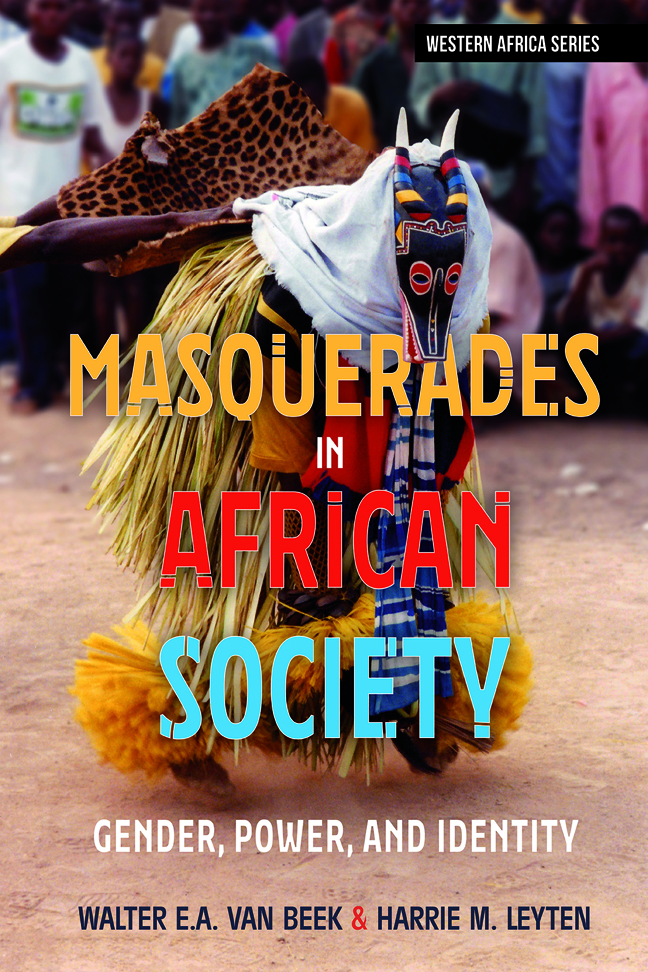Book contents
- Frontmatter
- Dedication
- Contents
- List of Illustrations
- Acknowledgements
- Introduction
- The Mask Crescent: Distribution of Masks and Masking in Africa
- 1 Mask Distribution and Theory
- 2 What is a Mask?
- 3 Masks and Masculinity: Initiation
- 4 Secrecy and Power
- 5 Death and its Masks
- 6 Women: Pivot of the Masks
- 7 Masks and Politics
- 8 Masks and the Order of Things
- 9 Masks and Modernity
- 10 Memories of Power, Power of Memories
- 11 Conclusion
- Bibliography
- Sources for Ethnographic Cases
- Picture Credits
- Index
4 - Secrecy and Power
Published online by Cambridge University Press: 22 February 2024
- Frontmatter
- Dedication
- Contents
- List of Illustrations
- Acknowledgements
- Introduction
- The Mask Crescent: Distribution of Masks and Masking in Africa
- 1 Mask Distribution and Theory
- 2 What is a Mask?
- 3 Masks and Masculinity: Initiation
- 4 Secrecy and Power
- 5 Death and its Masks
- 6 Women: Pivot of the Masks
- 7 Masks and Politics
- 8 Masks and the Order of Things
- 9 Masks and Modernity
- 10 Memories of Power, Power of Memories
- 11 Conclusion
- Bibliography
- Sources for Ethnographic Cases
- Picture Credits
- Index
Summary
‘Secrecy is one of man's great achievements’
(Simmel 1950: 320, cited in Finkenauer 1998: 50)Writing on the mask
During the 1989 mask ritual in the Dogon village of Amani, Mali, some youngsters in their enthusiasm had painted their name on the kanaga (antelope) headpieces of their masks (Figure 4.1); the horizontal bar offers a fair writing surface. Of course, they wanted to show off both as dancers and as ‘literati’; however, for the elders of the village this was a problem: now everybody who could read would know – and would be obliged to recognise – who was dancing that mask. And since literacy was not that scarce any longer, this was a bridge too far. Consequently, the elders decided that henceforth no names were allowed on any mask headpiece; and this injunction has been followed closely in subsequent dances, also in other villages. During the large 2008 mask ritual in the neighbouring village of Tireli, where schooling is now standard, nobody painted his name on a headpiece.
This small clash between modernity and tradition highlights the central secret of masking. By the simple act of writing, the kanaga entered the world of school and daily life, and with the written name of the proprietor it became less of a mask and more of a personal billboard. Since the main taboo still held that women and girls were not supposed to know that a man was dancing as such a mask, and surely not who the dancer was, the elders of Amani were completely justified in their prohibition: the ‘public secret’ had to be kept intact. Their well-reasoned rejection of this novelty showed how much they were intent on patrolling the borders of this ritual world. Masks do change with every new dama (mask ritual: see Chapter 5), a dynamic they are very much aware of, yet this new development threatened the very essence of masking.
Dimensions of secrecy
At the heart of masking lies the secret. In large stretches of the Mask Crescent, secrecy finds its organisational form in secret societies – which in the Dogon case happen to be absent. What could be more ‘African’ than a secret society? Masks loom large in the old exotic images: strange apparitions roaming the deep jungle, scaring outsiders while engaging in unspeakable rites in the depths of night.
- Type
- Chapter
- Information
- Masquerades in African SocietyGender, Power and Identity, pp. 119 - 148Publisher: Boydell & BrewerPrint publication year: 2023

